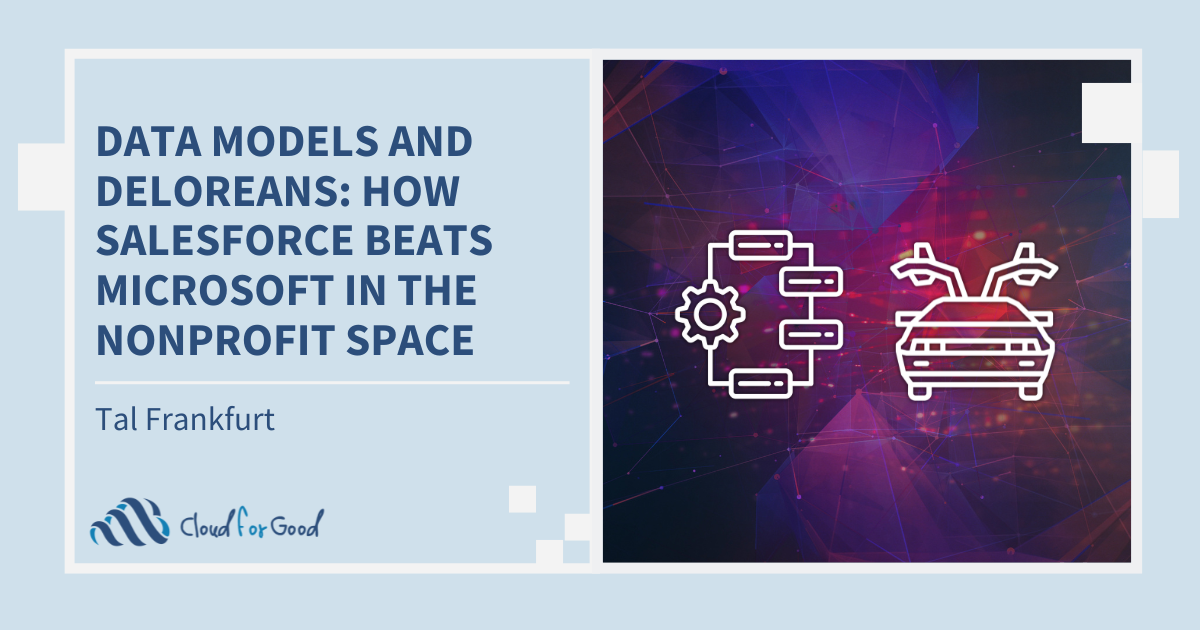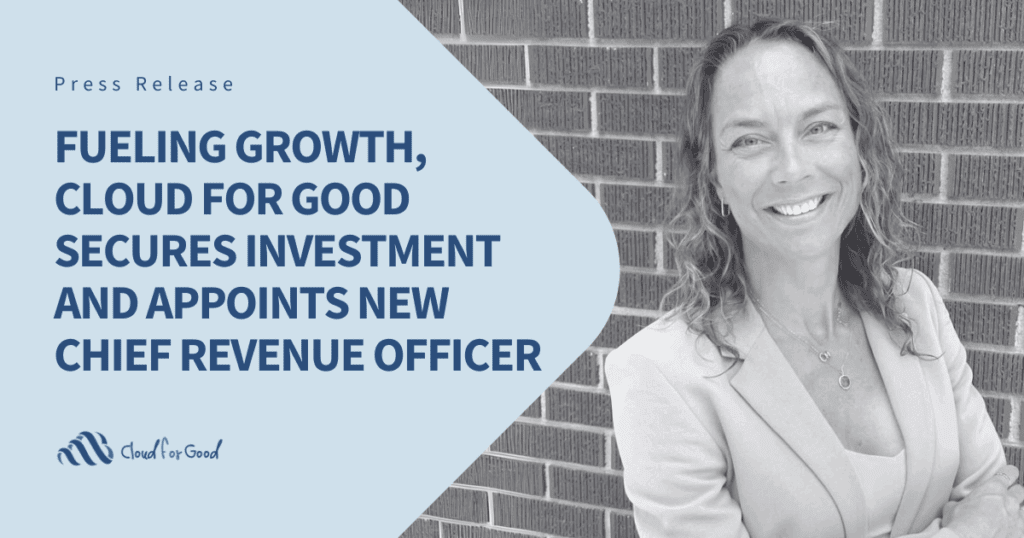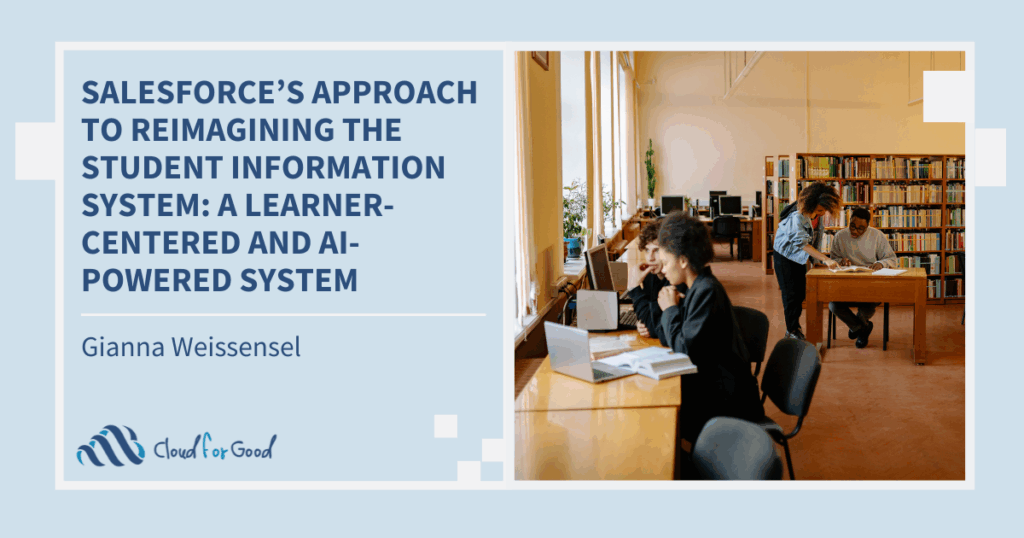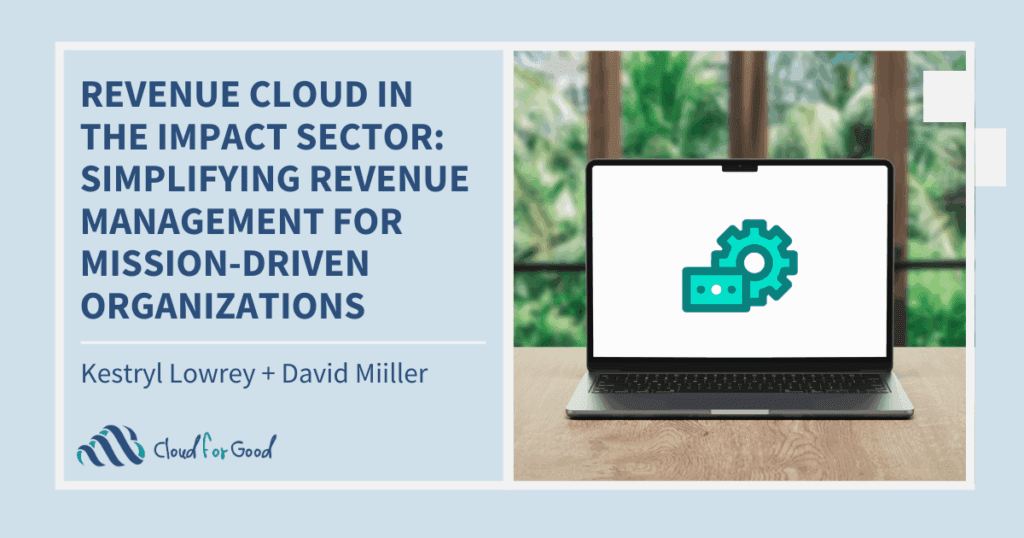As a kid, I always wanted to be like Marty McFly from the Back to the Future film franchise. I had countless dreams about driving the DeLorean DMC-12. That car looked like it came straight from the future—gull-wing doors, stainless steel body, and pure sci-fi magic.
But in reality, much like many hyped innovations, the DeLorean was a beautiful failure—underpowered, overpriced, and plagued by production issues. Its story made me think about Microsoft’s entry into the nonprofit space with the Nonprofit Common Data Model (CMD).
Microsoft announced the Nonprofit Common Data Model (CDM) as an out-of-the-box database of business entities to provide a common data language for business and analytical applications and facilitate data interoperability across platforms. The announcement had the nonprofit technology space mesmerized. Some even called it “our moment for change.”
However, just like the DeLorean, sometimes a product captures our imagination more than it actually is able to deliver. Over the last year, we have seen Microsoft step back from their investment in the nonprofit space. It started with a departure of most of the Tech for Social Impact leaders, was followed by the announcement of the end-of-life of Microsoft’s Fundraising and Engagement for Nonprofits, and continues with the departure of the entire leadership team of SylogistMission CRM, a donor management solution that was built on Microsoft Dynamics 365.
Microsoft can learn from the success of fellow technology giant Salesforce in creating a bold, powerful data model that has lived up to its name. Here’s what makes Salesforce’s Industry Data Model a superior choice.
Understanding Salesforce’s Industry Cloud
In early 2023, Salesforce announced the new Nonprofit and Education Clouds. This was a new approach that impacted not just these two industries, but also all other industries that Salesforce supports. In fact, in the last few years, Salesforce has been moving its health, state and local, consumer goods, financial services, and many other industries to this new data model.
Instead of designing industry-specific managed packages (i.e. Nonprofit Success Pack or Education Data Architecture) Salesforce built the industry functionality directly into its platform.
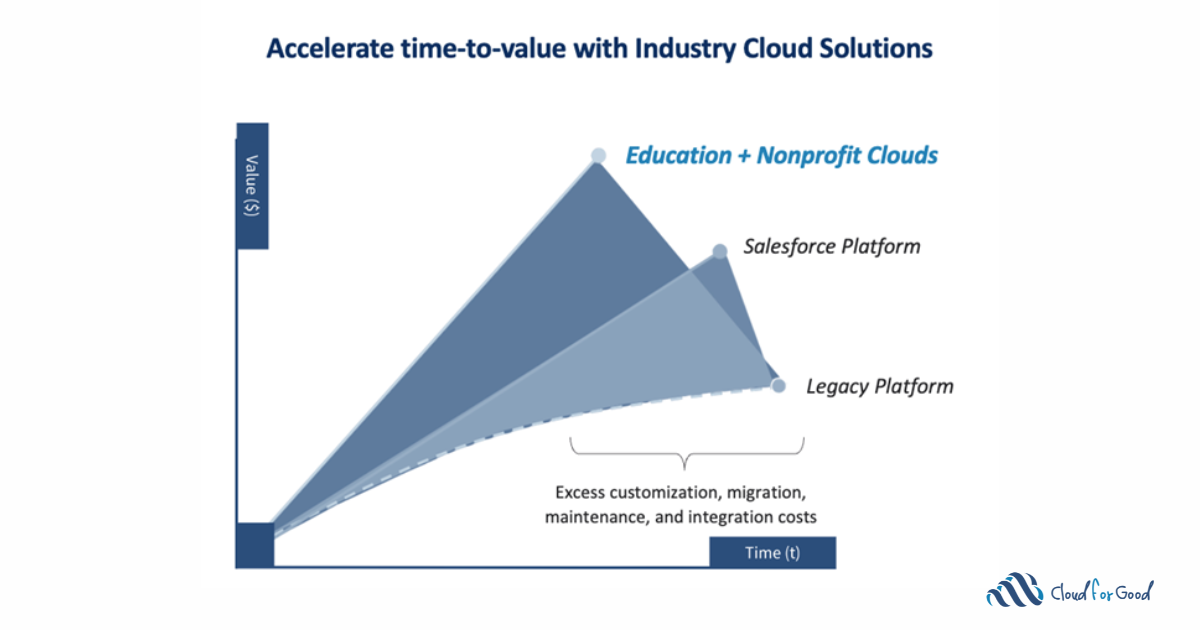
This means that while the nonprofit and education product teams can continue to innovate with purpose-built education and nonprofit features, our clients can also benefit more quickly from features that are pulled from other industries and use cases. Consequently, other industries can benefit from the innovation coming from the impact space.
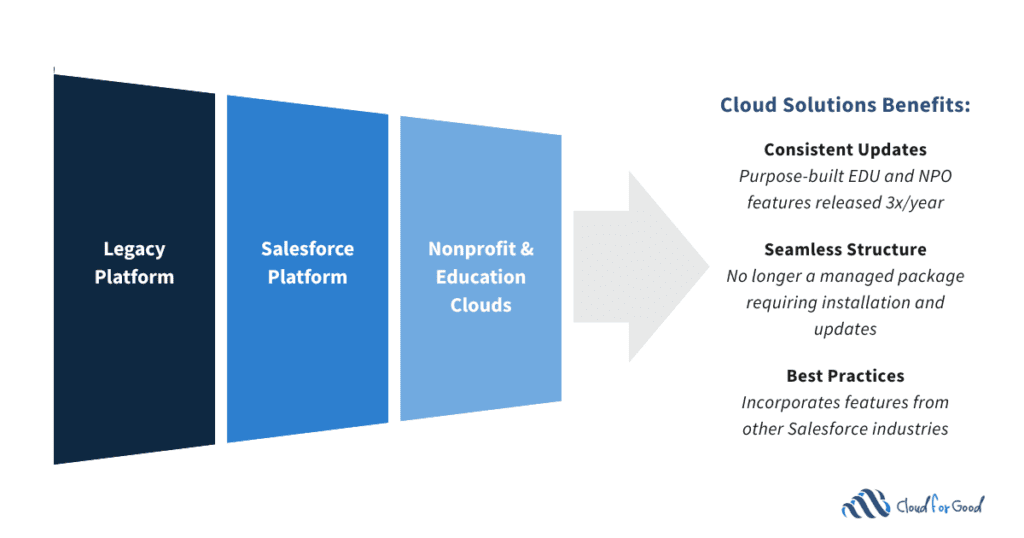
This industry-wide shift is setting Salesforce apart from the legacy managed package approach.
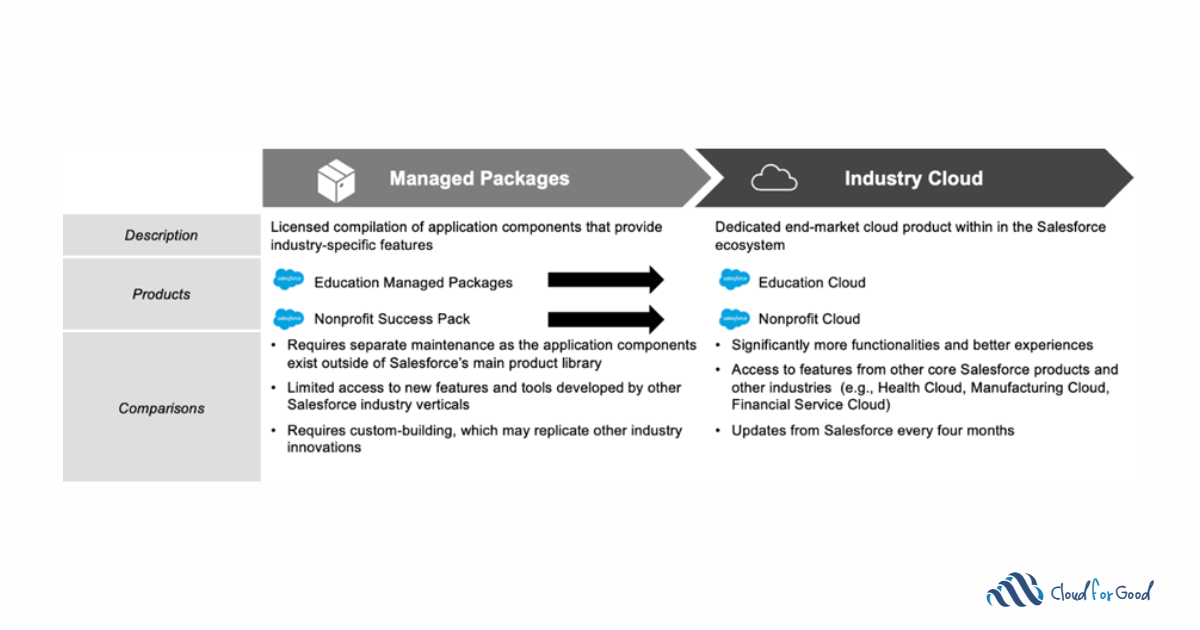
The point I make is that Salesforce took interoperability to a completely different level. While Microsoft’s vision (which is now abandoned) was to create a unified model for the nonprofit ecosystem, Salesforce was able to deploy a solution that allowed the nonprofit space to benefit from all industries without relying on data models on top of data models.
Unparalleled Ecosystem
Neither Microsoft nor Salesforce can solve for every functionality that our clients need. In fact, on average, Cloud for Good clients use three additional applications that enhance the functionality Salesforce Nonprofit and Education Clouds provide out-of-the-box.
Salesforce’s Industry Clouds integrate with +3,000 apps and services through AppExchange, Salesforce’s enterprise cloud marketplace. This allows organizations to extend their CRM functionality with pre-built industry solutions. That ecosystem simply does not exist on Microsoft’s CDM. Even though Microsoft has made an effort to encourage various ISVs to build solutions on top of CDM, most of these applications have no reviews and likely low adoption within the nonprofit space.
Skills, Not Just Tech
To time travel, you need more than just a cool car—according to Doc Brown you’d need a flux capacitor, 1.21 gigawatts of power, and a way to reach 88 miles per hour.
Salesforce realized the need for learning resources and created Trailhead, a free online learning platform that teaches users about Salesforce’s products. Trailhead offers modules on everything from writing code, to public speaking, and of course, a robust industry catalog that includes nonprofit modules and certifications.
While Microsoft offers general Microsoft Dynamics training and certifications, they do not have robust modules and certifications that are designed for the nonprofit sector. And without all that—if you choose Microsoft—you just have a slow, quirky 80s car.

